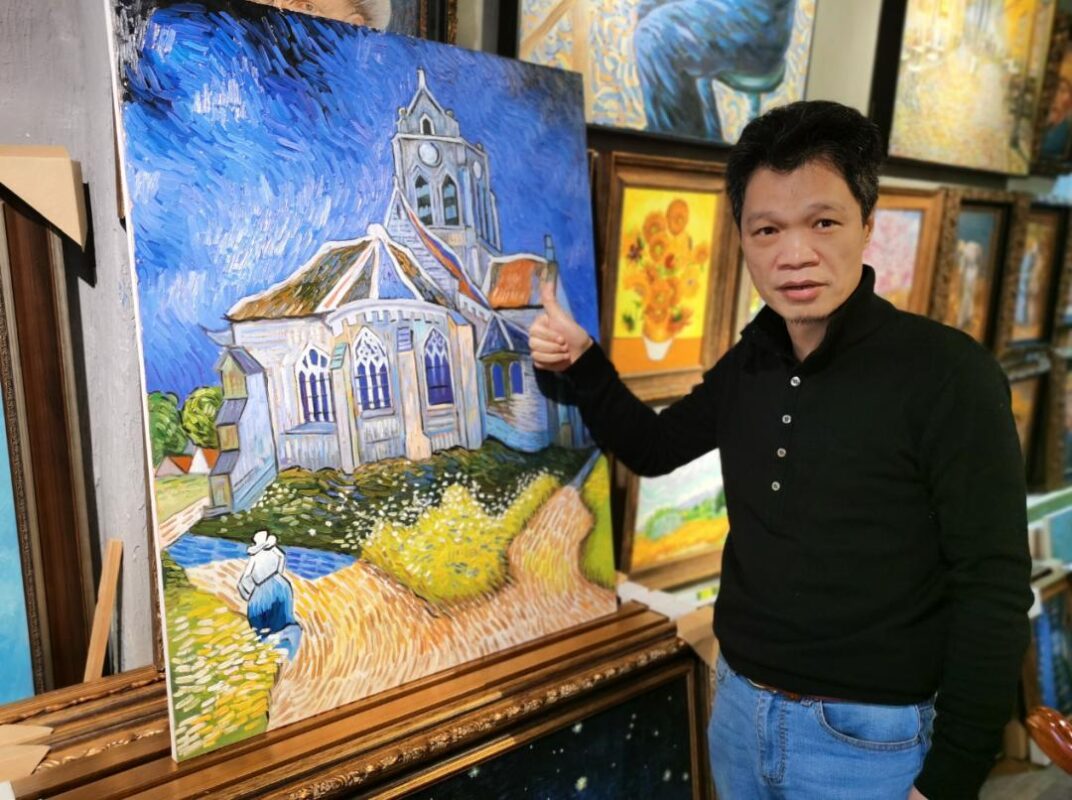Dafen oil painting Village
From an Artist to the “Chinese Van Gogh”

A year before Zhao Xiaoyong came to Shenzhen, art dealer Huang Jiang opened an oil painting factory in the Huangbeiling area of Luohu district.
Taking oil painting orders from Hong Kong, Huang hired over 60 painters to work in a 600-square-meter studio, where they divided labor to copy world-famous paintings.
At the time, this was a relatively large-scale oil painting factory nationwide.
After two years, rent prices skyrocketed, and the partners had disagreements, so Huang decided to find another location.
At that time, Dafen Village had farmland, oxen, chickens, ducks, and some houses, with a total population of less than 300.
This quiet place was not only cheap to rent but also ideal for painting.
Thus, the first oil painting factory in Dafen Village was born.
At the beginning, there were only about 20 painters, some from Guangzhou, Dongguan, and others were apprentices from other factories.
None of them had a professional background in fine arts, but they had some basic painting skills, and with a little training, they could become members of the assembly line in the oil painting factory, responsible for the base layer and coloring.
Today, the Huang Jiang Oil Painting Art Gallery is still located in Dafen Village.
Huang understands how to run a business and has connections to secure stable orders, so the factory’s orders grew larger and larger.
At that time, there were almost no commercial oil paintings.
Thus, with less competition and more orders, the number of paintings increased from tens of thousands per month to hundreds of thousands.
People who wanted to make a living by painting all flocked to Dafen Village. Huang outsourced a large number of orders to small dealers and painters.
When Zhao Xiaoyong first arrived in Dafen Village, he had to start from scratch.
Although he had limited talent in painting, his knowledge of oil painting techniques and colors was quite rudimentary.
“I was lucky. I lived with a teacher from an art college who taught me for more than half a year,” he said. He was halfway into Dafen Village’s oil painting scene.
But for a long time after arriving in Dafen Village, he spent all his money on buying paint and brushes and didn’t sell a single painting.
“I went out to promote my paintings, carrying them to Luohu to find galleries. If that didn’t work, I’d leave them in stores for consignment.”
At that time, not many people wanted to paint Van Gogh because his paintings required too much paint.
“When I couldn’t sell my paintings, I suddenly empathized with Van Gogh’s hardships. More than 100 years ago, he couldn’t sell his paintings. Today, more than 100 years later, I’m still unable to sell the ones I paint,” he said, feeling like he was commiserating across time and space.
“Shouldn’t you stop painting Van Gogh?” someone advised him. But Zhao Xiaoyong gradually became obsessed with Van Gogh.

